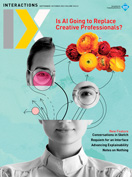Authors:
Yuki Chen, Jonaya Kemper, Erik Harpstead, Ross Higashi, Judith Uchidiuno
A large number of video gamers in the U.S. identify as people of color. However, there is very limited avatar diversity in mainstream video games, and providing tools that allow players to create their idealized avatars is often overlooked by video game creators [1]. Without these tools, players who identify as racial minorities may struggle with creating characters that they truly identify with, as the available options may capture only a surface-level understanding of minority groups (e.g., a limited range of skin tones) and reinforce harmful stereotypes surrounding clothing, hairstyles, and other superficial features. Culturally informed character tools are particularly important for building interracial social support and creating a diverse and inclusive environment for young video gamers [2]. In this article, we uncover social and cultural values that drive authentic avatar creation for Black children in video games, supporting their intersectional identities.
→ Racial representation in video games is important for strengthening identity and social support for Black children.
→ Black children have limited character selection and customization tools for creating their avatars in popular video games.
→ Understanding the cultural and social norms that Black children value is important for accurate representation and character creation in games.
Our research team at Carnegie Mellon University partnered with students from two after-school networks in the mid-Atlantic region. We codesigned a character creation tool with 42 African American and mixed-race students ages 6 to 14 (22 girls, 20 boys) from diverse cultural backgrounds. We also codesigned two video games with them, Zillah City, a first-person shooter game, and Zillah Beats, a beat-matching endless runner game, that allowed students to design and play as avatars that accurately represented them (Figure 1). After students created their characters, we asked them to reflect on their characters' attributes and traits and share why those features were important to them. From their responses, we uncovered trends that tie back to self-identity and culturally inspired themes.
 | Figure 1. The diagram shows the initial screens of the two games examined, Zillah City (left) and Zillah Beats (right). |
 The Influence of Culture and Students' Intersectional Identities on Avatar Creation
The Influence of Culture and Students' Intersectional Identities on Avatar Creation
Our character creation tool enabled students to reflect on multiple facets of their identities, such as skin tone, facial features, and hairstyles, in the appearance of their characters. Many students created characters that resembled themselves, with some requesting additional customizations to better match their characters (Figure 2). In the following subsections, we will discuss specific identifiers that were most prevalent.
 | Figure 2. A collage of student-made characters from both games. |
"I want my hair": The importance of Black hair in character representations. Most children created characters that matched their physical appearance, enhanced by clothing choices that matched their sense of style. However, they expressed the need for a larger variety of hairstyle options, especially braided hairstyles. There was no evidence of students trying to fit popular beauty standards (e.g., straight blond hair, hyper-masc or hyper-femme personas). When the students were unable to match their preferred hairstyles, they sometimes commented that they had limited choices for hairstyles and asked for help to find the styles they preferred. Overall, the children expressed positive feelings toward and pride for Black hairstyles, noting that they were "pretty" and "cool." Regardless of gender, students communicated the need to create braids, locs, and other natural hairstyles that they may wear (e.g., curly bobs, Afros, updos, frohawks, sponge twists; Figure 3).
 | Figure 3. Sample of popular hairstyles in Zillah City and Zillah Beats. |
Wearing one's hair in its natural (unaltered texture and without chemical processing) state, with all the styling flexibility it affords, is powerful and significant in Black culture [3]. For some Black people, natural hair is seen as a form of acceptance, self-love, and resistance to Eurocentric notions of what is considered normal or beautiful. Increasing hairstyle options for avatars in video games allows for more desirable representation, which translates to stronger identification with one's race and enhanced self-confidence.
"Who am I?" Representation beyond physical appearance in game avatars. Black physique and hair is merely one dimension of Blackness—not all students tried to replicate themselves in the game. This was more common among older students, who created characters that did not always match their age or gender presentation. Students created aspirational characters in the forms of familiar others (e.g., friends, family, teachers, celebrities, fantastical creatures, and idealized versions of themselves). For instance, one student created a hybrid character that pulled physical attributes from two Black women who moderated the codesign sessions, stating that they looked up to them. Several students created prominent Black figures such as Michael Jordan, LeBron James, and Michael Jackson for a similar reason.
Students also created avatars that resembled fantastical, fantasy, or extraterrestrial versions of themselves [4]. These characters are depicted with inhuman skin tones such as swamp green and grayish white—traits that align with the presentation of zombies or vampires in mainstream media. We later learned that students created similar-looking characters for themselves in online role-playing games such as Roblox. These characters contribute to players' gaming identity and mirror a nontraditional form of Black representation in video games. Another student created a stark, white-skinned Black character, sharing that they had a family member with albinism and wanted to create a character that represented them. This is a facet of Blackness that is usually overlooked by game developers. Understanding the motives driving the youth's character creation will allow for a more accurate portrayal of Blackness and empowers the message that students do not have to "look Black" to be Black.
"Who don't like Jordans": Sneakers play a crucial role in Black culture. There was a recurring trend of obsession with sneakers among children of all age groups, especially those that resembled Nike's renowned sneaker collection, Jordans. It was the most popular sneaker choice and the most commented-upon element in character accessorizing. Unlike the hairstyles, where students needed a lot of variety, students were content with the one option that resembled Jordans and then customized different parts of the shoe with their favorite color combinations. Nike's website allows customers the ability to customize the color on different parts of their shoe, so students may have been mirroring that virtually. Most students in the post-interviews highlighted their sneakers as a favorite part of their avatar, despite the fact that the Jordan-like shoes were not the default sneaker option.
The fascination with Jordans likely stems from intergenerational and cultural norms. Our participants were born after Michael Jordan's era; however, his legacy remains influential in the Black community due to his athleticism and the media's portrayal of sneakers. In the 1990s, Nike commercials marketed the idea of Jordans as a high-technology product with the capability to accentuate the already superior athletic power of Black individuals [5]. The high price tag of sneakers have elevated them to an emblem of social status and wealth and have evolved them to be a statement piece for Black identity and success [6].
"He has some drip": Hip-hop culture highly influences students' perceptions of belonging. Students often used the terms not ugly, good-looking, cool, swag, and drip when communicating their characters' inspiration. They elaborated on their need for jewelry and accessories such as sunglasses and watches, and complained about the lack of certain customization options, even when it did not seem functional in a first-person shooter game setting. For example, some girls requested extravagant dresses; others requested chains and teeth grills in Zillah City. Students eagerly recommended certain accessories to their peers and showed off their characters using terms such as drip and swag. There were extensive comments like "nice Nikes" or "fresh haircut" to impress others and validate themselves.
The notions of swag and drip were popularized by famous Black musicians and artists (e.g., rappers) [7]. Hip-hop and rap culture constitute a core component of Black identity, driving the way students of all races dress, talk, and interact. Children often contend with the pressure to perform and be socially accepted. This pressure can manifest itself in various ways, such as having the right clothes, listening to the right music, and speaking the right language.
Incorporating culturally informed character-customization tools that cater to various ethnic groups can be a significant factor in enhancing player engagement and fostering identification within their racial community. This is particularly important in enabling players to build characters that reflect their own appearance or traits they admire. Many children at the research workshop spent more time on character creation than on actually playing the game, requesting diverse hairstyle options, multiple ways to express their intersectional identities, and sneakers and accessories that fostered social acceptance. The design of players' characters in video games can either contribute to longstanding patterns of communicating harmful stereotypes of Black children or help combat them by incorporating tools that give students the agency to represent themselves holistically.
We would like to thank the Boys & Girls Club of Western Pennsylvania for partnering with us throughout these studies. We would also like to thank the National Science Foundation for sponsoring our work (NSF grant #1906753).
1. Passmore, C. J., Birk, M.V., and Mandryk, R.L. The privilege of immersion: Racial and ethnic experiences, perceptions, and beliefs in digital gaming. Proc. of the 2018 CHI Conference on Human Factors in Computing Systems. ACM, New York, 2018, 1–19.
2. Clement, J. Distribution of video gamers in the United States in 2022, by age group. Statista. Oct 17, 2022; https://www.statista.com/statistics/189582/age-of-us-video-game-players/
3. Phelps-Ward, R.J., and Laura, C.T. Talking back in cyberspace: Self-love, hair care, and counter narratives in Black adolescent girls' YouTube vlogs. Gender and Education 28, 6 (2016), 807–820; https://doi.org/10.1080/09540253.2016.1221888
4. Rankin, Y.A. and Henderson, K.K. Resisting racism in tech design: Centering the experiences of Black youth. Proc. of the ACM on Human-Computer Interaction 5, CSCW1 (2021), 1–32.
5. Wallace, B. Racialized marketing in the athletic apparel industry: The convergence of sneaker promotion and Black culture in the United States. The International Journal of the History of Sport 39, 1 (2021), 1–15; https://doi.org/10.1080/09523367.2021.1946037
6. Matthews, D., Cryer-Coupet, Q., and Degirmencioglu, N. I wear, therefore I am: Investigating sneakerhead culture, social identity, and brand preference among men. Fashion and Textiles 8, 1 (2021); https://doi.org/10.1186/s40691-020-00228-3
7. Wickman, F. Did Jay-Z really invent "swag"? The answer may surprise you. Slate. Mar. 30, 2012; https://slate.com/culture/2012/03/who-invented-swag-and-swagger-jay-z-soulja-boy-brand-nubian.html
Yuki Chen is a student in the Tepper School of Business at Carnegie Mellon University. She is interested in investigating how games implement representation and identity to their consumers. [email protected]
Jonaya Kemper is a Nebula award-winning artist, activist, educator, designer, and scholar who regards play as a means of liberation for people of marginalized identities. Their work investigates how intersectionality, storytelling, and autoethnography serve as a means to create more inclusive futures and explore a more diverse past. [email protected]
Erik Harpstead is a system scientist at the Human-Computer Interaction Institute at Carnegie Mellon University who studies educational games. He develops new data science methods, tools, and techniques that allow designers and researchers to ask questions about their games and use the answers to actionably inform redesign. [email protected]
Ross Higashi is co-director of the Carnegie Mellon Robotics Academy, where he conducts design-based research, development, and outreach leveraging the educational and equity affordances of robotics in STEM education. [email protected]
Judith Uchidiuno is an assistant professor at Georgia Tech's School of Interactive Computing. She designs culturally informed education technologies that increase access to computer science education for students from low-income and underserved communities. [email protected]
 Copyright 2023 held by owners/authors
Copyright 2023 held by owners/authors
The Digital Library is published by the Association for Computing Machinery. Copyright © 2023 ACM, Inc.






Post Comment
No Comments Found